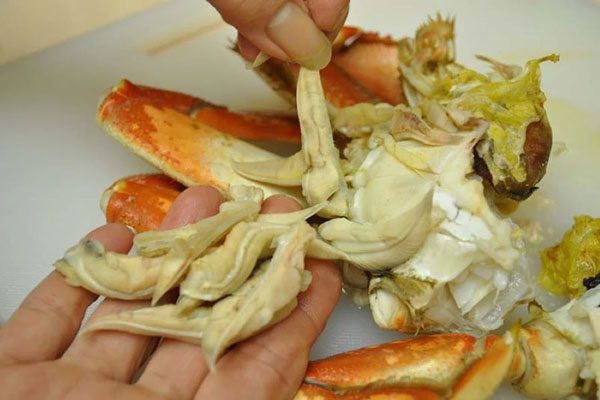Crab is a nutritious food that many people love; however, experts recommend the following parts to avoid when eating crab to protect your health.
Crab is a popular seafood dish that is not only delicious but also contains many essential nutrients beneficial for health. In 100g of crab meat, there are up to 59mg of calcium, 0.8mg of iron, 1.5g of fat, 19g of protein, along with several other vitamins.
Crab meat plays a role in supporting eye health and boosting the immune system, helping to keep the heart healthy.
According to nutrition experts, people should eat crab at least 2 to 3 times a week to supplement essential minerals for the body. However, when eating crab, it is important to remove the following parts:
Crab Gills: Crabs live underwater and have gills for respiration to sustain life. These gills consist of soft gray tissue, resembling two rows of eyebrows located right under the crab’s shell.
The gills are considered the dirtiest part of the crab, harboring many parasites. Eating crab without removing the gills can inadvertently introduce pathogens into your body, which is not beneficial.

Crab gills are home to many parasites (Illustrative image)
Crab Intestine: The crab’s stomach is a small triangular sac located within the crab’s body. The intestine is a black tube that connects to the navel. It is noteworthy that crabs are omnivorous animals with a diverse diet that includes plants, small fish, and decaying matter in the water. To ensure health, you should remove this part as it can easily accumulate dirt.
Crab “Heart”: The “heart” of the crab is hexagonal in shape, located between the crab’s shell, and is covered by a black membrane. According to Traditional Chinese Medicine, this is considered the “coldest” part of the crab and is best avoided.
In reality, the crab’s “heart” is an important part of its blood circulation. While it does not contain parasites, its taste is not very appealing, and many people are not interested in it.
Individuals Who Should Avoid Eating Crab:
- People with colds, fevers, stomach pain, or those suffering from diarrhea.
- Individuals with chronic gastritis, peptic ulcers, gallbladder inflammation, gallstones, and those with liver disease should also limit their crab consumption.
- People with coronary heart disease, high blood pressure, atherosclerosis, and high cholesterol should eat less or avoid crab, as crab roe contains a high level of cholesterol, which is not good for those with these conditions.
- Individuals with weak stomachs or those who are overly sensitive should exercise restraint when it comes to this tempting dish.


















































